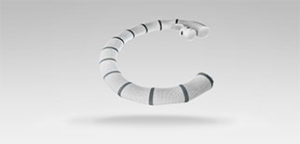
This content is only for readers outside of the US as it discusses a device that is not FDA approved.
In recent years, several transcatheter treatment options have become available in Europe for patients with functional mitral regurgitation considered too high risk for surgery. One of these systems is the Cardioband Mitral System. Cardiovascular News spoke to Professor Francesco Maisano (University Heart Centre, University Hospital Zurich, Zurich, Switzerland) about the system and why it could be a good option for treating mitral annular dilatation.
Why has Cardioband emerged as a potential treatment option for patients with functional mitral regurgitation and how does it work?
The possibility of reproducing annuloplasty with a catheter procedure is a great advancement in the field of structural intervention. Cardioband has been designed to closely reproduce surgical annuloplasty with the advantages of a minimally invasive approach to annular repair. The Cardioband implant is an adjustable posterior band affixed from commissure to commissure with multiple anchors at the hinge of the posterior leaflet. Following the fixation of the implant on the annulus, the implant is adjusted under echocardiographic guidance to reduce the annulus and enhance leaflet coaptation. The length of the band can be adjusted bidirectionally and released in case of excessive annular reduction (to avoid frozen posterior leaflet or valve stenosis).
What is the evidence base for percutaneous annular repair for patients with functional mitral regurgitation?
The Cardioband Mitral System has been studied in a feasibility trial for CE mark acquisition in Europe [the system received CE mark in September 2015]. In my opinion, the results suggest percutaneous annular repair reduces mitral regurgitation in patients with functional mitral regurgitation and heart failure patients to a degree that is comparable to—if not better than—that achieved with surgical annuloplasty. The reduction of mitral regurgitation was substantial and is in line with a reproducible reduction of annular dimension, which remain stable throughout one year.
Can percutaneous annular repair be used to complement other mitral therapies?
Yes, the main advantage of percutaneous annular repair is it allows future complementary procedures such as leaflet repair or valve replacement to be performed if needed. Preserving the native valve anatomy is especially important in cases of mixed and complex aetiologies.
The Cardioband implant interacts only with the annulus, meaning it does not obstruct the future possibility of repair or replacement.
 How does mitral annular dilatation affect the mitral valve? For example, can it lead to mitral regurgitation?
How does mitral annular dilatation affect the mitral valve? For example, can it lead to mitral regurgitation?
Mitral valve annular dilatation is one factor behind mitral regurgitation, and is almost invariably present in all patients. In some cases, it is primary (e.g. annular dilatation in patients with chronic atrial fibrillation), and in other cases it is the consequence of left ventricular remodelling (e.g. annular dilatation in patients with functional mitral regurgitation). Most of the patients I see in my clinic with mitral regurgitation have annular dilatation.
What are the current approaches to treating mitral annular dilatation?
There are several surgical rings (almost 50 different types), as well as several direct and indirect transcatheter annular repair systems under investigational and commercial use.
To date, in my opinion, Cardioband is the only available transcatheter device to perform annular repair with consistent and substantial annular remodelling. Other systems can only partially remodel the annulus and, thus, have to be considered palliative treatments with limited applicability.
Why might percutaneous annular repair be an effective treatment option for annular dilatation?
When dilatation is the problem, then transcatheter annular repair is actually superior to surgery as it can deliver the same treatment through a minimally invasive approach. There are no incisions, no heart lung machines, no ischaemia, and—most importantly—it is performed on the beating heart. This allows for adjustment of annular reduction and real-time confirmation of procedural results.
What evidence is available for managing annular dilatation with percutaneous annular repair?
Data are only available for the Cardioband Mitral System; in my opinion, the only device to reliably address annular dilatation.
What further evidence is needed for the management of mitral dilatation?
We need a head-to-head comparison with other repair procedures, and we need to define the ideal timing for this procedure. Different from MitraClip (closing the door to other interventions) or replacement (consequences of the prosthesis), percutaneous annular repair has the potential to be implemented and applied in the early phase of congestive heart failure with functional mitral regurgitation, to try to obtain a greater prognostic benefit and induce reverse remodelling.











